E. Neat Model
1. Endlap and Sidelap
To see a 3D model requires overlap between successive photographs, Figures E-1 and E-2.
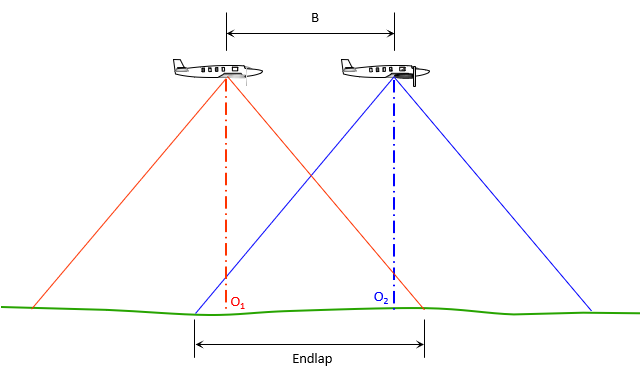 |
| Figure E-1 Endlap - Flight |
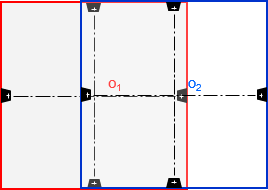 |
| Figure E-2 Endlap - Photos |
B is the airbase, the distance between successive exposure points.
How much overlap is needed? For most mapping photography 60% or more is used so the principal points of both photos (o1 and o2) are in the overlap area. Including both principal points helps identify the actual flight path.
What about using 100% overlap? Not possible unless the camera is in a stationary helicopter or drone. If it is, then a 3D model isn't possible because the perspective doesn't change. The greater the overlap, the more photos needed to cover the same area. Maximum overlap is limited to about 75%.
Most aerial photography is flown in strips so their overlap is referred to as endlap (photos are end-to-end).
Adjacent strips are also overlapped but not to the same extent. Sidelap, Figures E-3 and E-4, is typically 15-30%.
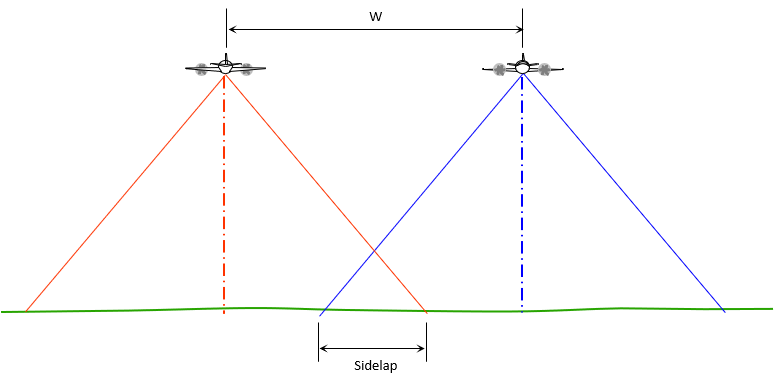 |
| Figure E-3 Sidelap - Flight |
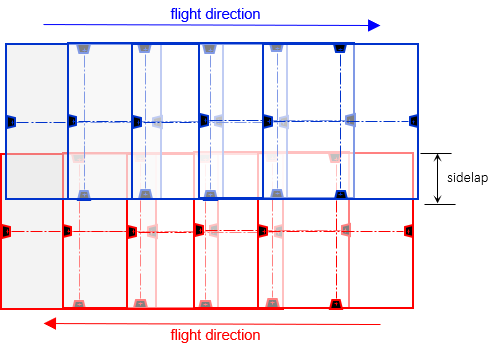 |
| Figure E-4 Sidelap - Photos |
W is the distance between adjacent flight lines.
2. Besides Being Tidy, What's a Neat Model?
The neat model for a overlapping photo pair is the area between their principle points in the flight direction and extends halfway into the sidelap areas, Figure E-5.
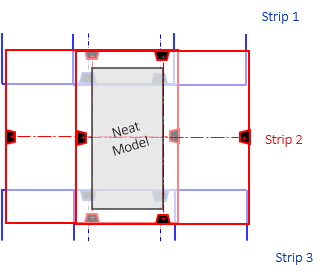 |
| Figure E-5 Neat Model Definition |
Figure E-6 shows the neat model dimensions on an overlapping photo pair:
- l is the negative/image size (e.g. 9 in by 9 in)
- EL is the endlap in percent
- SL is the sidelap in percent
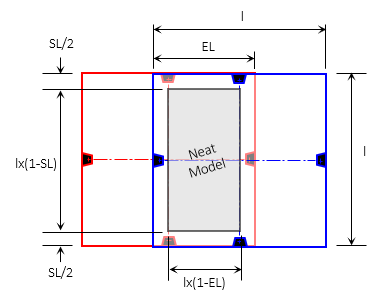 |
| Figure E-6 Neat Model Dimensions |
For example, using a 9 in x 9 in negative format with 60% endlap and 30% sidelap, the neat model dimensions are:
9 in (1-0.6) = 3.6 in
9 in (1-0.3) = 5.4 in
The neat model is the primary area for making stereo measurements and perform mapping opeartions. The model doesn't reach all the way across the endlap and sidelap areas because the largest lens distortions typically occur along the photograph edges.
Because it's the mapping area, it's also used for flight planning purposes.
3. Flight Planning
a. Considerations
Generally multiple aerial photos will be needed to cover an area. Depending on area configuration, more than one flight line may be necessary. A number of factors affect how many photos are needed, primarily flying height, focal length, negative/image size, and side/endlap percentages. Their combination affect the neat model's ground converage. Knowing the neat model and area sizes, the number of photos and flight lines can be determined.
b. Ground Coverage
Scale relates photo area to ground area. This is shown in Figure E-7 and quantified in Equations E-1 and E-2.
 |
| Figure E-7 Neat Model Ground Area |
| |
Equation E-1 | |
| |
Equation E-2 | |
| l | negative/image side length | |
| S | Scale | |
Refeing to Figure E-3 and recalling that the neat model extends halfway into the sidelap area, the width of the neat model is the same as the distance between the fight lines, W.
Using the previous neat model example, with a 6.0 inch focal length camera flying 1200 ft above terrain, ground coverage is:

The flying height can be increased if greater coverage is needed. Otherwise a different camera can be used, varying focal length and image format size combinations.
c. Flight Lines
A flight line consists of two or more consectutive neat models. Multiple flight lines are uiformly spaced, W, to ensure there are no gaps betweeen adjacent neat models, Figure E-8.
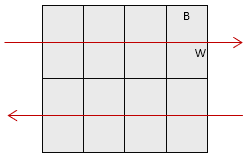 |
| Figure E-8 Adjacent Flight Lines |
The optimum flight line orientations and number of photos can be determined by comparing the neat model ground coverageto to the approximate dimensions of the area to be mapped.
Continuing with the example, the area to be mapped is roughly rectangular, approximately 3500 ft N/S and 4750 ft E/W, Fugure E-9.
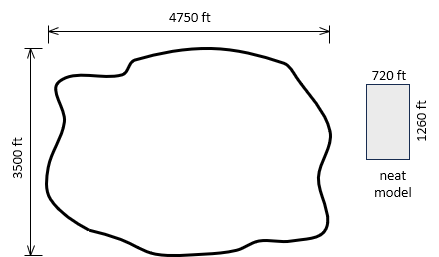 |
| Figure E-9 Area To Be Flown |
.
Figure E-10 shows that three E/W flight lines cover the area.
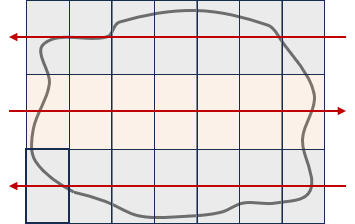 |
| Figure E-10 E/W Flight Lines |
There are seven neat models per flight line, requiring 8 photos.
The total number number of photos needed is (3 lines) x (8 photos/line) = 24 photos
Figure E-11 shows that four N/S flight lines are needed to cover the same area.
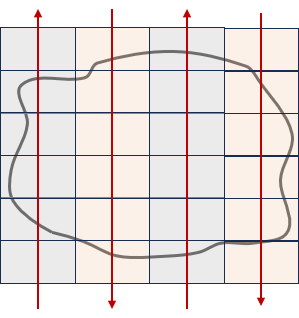 |
| Figure E-11 N/S Flight Lines |
There are 6 neat models per flight line requiring 7 photos.
The total number number of photos needed is (4 lines) x (7 photos/line) = 28 photos
The N/S option requires 4 more photos. Although it looks like the northwestmost neat model could be eliminated, it only saves a single photo.
In either case, there is very little wiggle room. An additional flight line and possibbly one more neat model per line might be incorporated as a safety factor. Increasing the flying height increases neat model size, so that may be another alternative. It depends in part on the topography and desired accuracy of the final product.